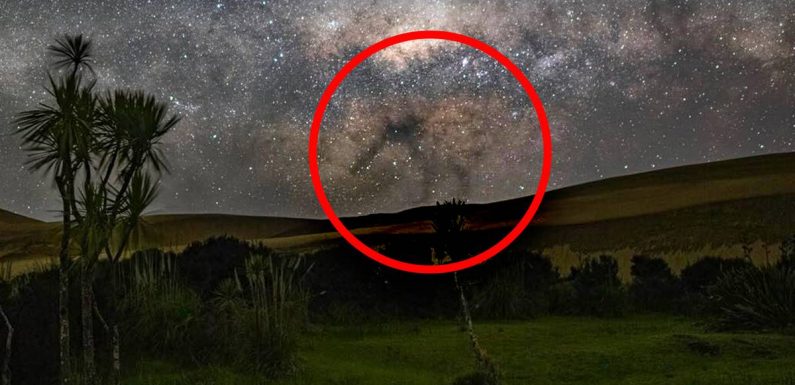
Over the longest night and the Matariki celebrations, many New Zealanders have been spending more time looking at the night skies. Perhaps, even seeing some constellations for the first time.
In Te Paki, one early riser was convinced he saw the likeness of the national bird in the skies over Northland.
“I caught our Galactic Kiwi going for a walk along those very same, enormously epic dunes,” said astrophotographer Grant Birley.
There in the Milky Way is the likeness of a flightless kiwi bird.
“The little dude looked like it was surfing the dunes,” he said.
The amateur photographer from Auckland said he had got up early in order to capture the image as the stars set over Northland.
While he was using a camera to pick out the kiwi, it is visible to the naked eye, “if you know where to look.”
Every New Zealander can recognise the Southern Cross / Māhutonga – but the ‘Galactic Kiwi’ is a fairly recent addition to the almanac of astral bodies.
Within New Zealand astronomy circles the Kiwi is something of an “in joke”.
“Yes, the kiwi is a ‘thing’,” said Dr Ian Griffin, astronomer and director of the Museum of Otago in Dunedin.
Although not officially recognised by astronomers, he says “it has been identified for at least a decade, if not longer!”
The kiwi itself is not a constellation, per se, but a collection of dark clouds of dust.
Against the brighter parts of the Milky Way, we can see the likeness of the bird in the dark splodges. The unusual asterism is visible from all over the globe, although you might not notice it unless you were preconditioned to recognise a kiwi bird.
Across the ditch, Australian aboriginal cultures have a similar tradition of seeing a giant emu in the skies.
“Humans are very good at recognising patterns in the sky. That’s what all the constellations are,” he said.
As we mark Matariki and the Māori astral calendar, these traditions are an example of how cultures can see different things in the same night sky.
“Matariki is a good example – the Japanese called it Subaru, for the Greeks and Romans it was the Pleiades,” says Griffin.
“The human relation to the stars is all about that from the earliest times, when people tried to makes sense of the sky by drawing patterns.”
Although, he recognises the Galactic Kiwi is “a bit of fun”.
The celebrated astronomer, who has named 29 distant planets (one for rock star Bruce Springsteen), is known for his irreverent sense of humour.
His pet theory for the ‘Galactic Kiwi’ revolves around the fact it was first spotted around the Australian Aboriginal constellation names became popularised among astrologers.
“The kiwi has been around maybe 10 15 years ago, perhaps in response to the Australian emu,” he said.
“We had to find our own.”
Source: Read Full Article










/cloudfront-ap-southeast-2.images.arcpublishing.com/nzme/IHNBT3C2ETBTEB6US4FC3FFY4A.jpg)
/cloudfront-ap-southeast-2.images.arcpublishing.com/nzme/BYP635D65JEBWIPNOHOUJSKNTE.jpg)